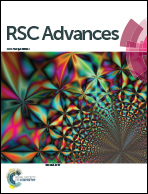Exploiting novel process windows for the synthesis of meso-substituted porphyrins under continuous flow conditions†
Abstract
Porphyrin synthesis by classical methods frequently involves the use of high temperatures, toxic and dangerous reagents yielding the product in very low amounts and with poor scalability. Herein, we have studied the synthesis of meso-substituted porphyrins under continuous flow conditions, thus demonstrating scale-up for the porphyrin synthesis in a safe, cost-competitive, highly pure, reproducible and robust manner.


 Please wait while we load your content...
Please wait while we load your content...